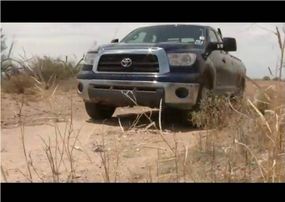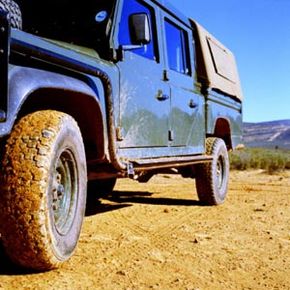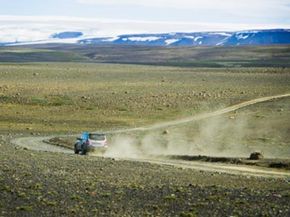
Have you ever driven down a back road and suddenly felt like you'd just ran over a series of speed bumps? Did you wonder what they're doing in a road that seems to be in the middle of nowhere?
The phenomenon you've experienced is what's called a "washboard road." When a car travels on an unpaved road, a wavy pattern will ultimately develop. At first, tiny ripples form, and then they get larger as more cars pass over them. Whether you're traveling on roads in Australia or Africa, South Dakota or Southern California, washboard roads — with a wavy pattern that resembles an old-fashioned metal washboard — are a common occurrence.
Advertisement
While washboard roads are familiar to drivers on country roads around the world, the phenomenon occurs elsewhere in science and technology. Whenever a sideways force acts on a malleable surface, ripples occur. You may have seen the same little ripple on wind- or water-driven sand at the beach, and on moguls that develop on ski hills. Motocross bikes and snowmobiles also cause ripples to form in dirt and snow. Small bumps on steel railway tracks are a result of the washboard phenomenon as well.
Washboard roads often are more than a nuisance because they can damage suspension systems and increase road maintenance costs. They also create a safety problem because a car or truck that doesn't experience full contact with the ground might not be able to brake properly. So what causes washboard roads?
Advertisement


